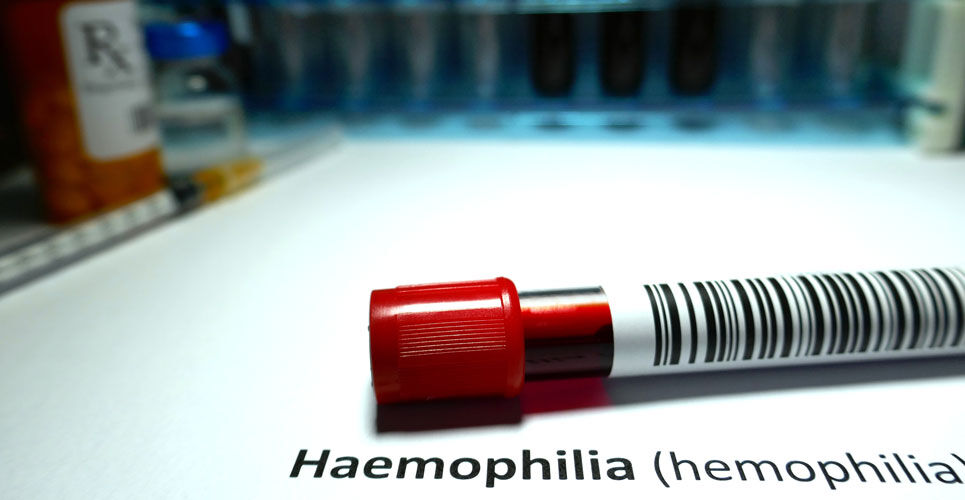Etranacogene dezaparvovec (brand name Hemgenix) is the first gene-based therapy approved for use in the EU for patients with moderately severe to severe haemophilia B, its manufacturer CSL has announced.
Etranacogene dezaparvovec has been granted a conditional marketing authorisation by the European Commission for treating adult patients with severe and moderately severe haemophilia B (congenital Factor IX deficiency),without a history of Factor IX inhibitors.
Haemophilia B is an inherited and life-threatening rare disease affecting one in 40,000 live males – about 15% of cases of haemophilia.
The condition is a caused by missing or defective clotting protein, factor IX and sufferers are particularly vulnerable to bleeds in joints, muscles, and internal organs leading to pain, swelling and ultimately joint damage.
Patients with haemophilia B require lifelong treatment with intravenous infusions of Factor IX to maintain sufficient levels, which can have a significant impact on their quality of life and wellbeing.
Etranacogene dezaparvovecis an adeno-associated virus five (AAV5)-based gene therapy that is given as a one-time treatment for moderately severe to severe haemophilia B patients.
It uses AAV5 as its vector, which carries the naturally occurring Padua gene variant of Factor IX (Factor IX-Padua). This generates Factor IX proteins that are five to eight times more active than normal.
Hemgenix clinical data
The main clinical study with etranacogene dezaparvovecis the HOPE-B trial, which is an ongoing, multinational, open-label, single-arm study, designed to evaluate the safety and efficacy of the drug.
Some 54 adult haemophilia B patients classified as having a diagnosis of moderately severe or severe haemophilia B and requiring prophylactic Factor IX replacement therapy, were enrolled in a prospective, six-month observational period during which time they continued to use their current standard of care therapy to establish a baseline Annual Bleeding Rate (ABR).

After the six-month lead-in period, patients received a single intravenous administration of etranacogene dezaparvovecis, with 53 patients completing at least 18 months of follow-up.
The primary endpoint in the pivotal HOPE-B study was 52-week ABR after achievement of stable Factor IX expression compared with the six-month lead-in period.
Results demonstrated that etranacogene dezaparvovecis produced mean Factor IX activity of 36.9 IU/dL at 18 months post infusion. At 24 months follow-up, Factor IX activity remained stable at 36.7 IU/DL.
After the six-month lead-in period post-infusion, the adjusted annualized bleeding rate (ABR) (1.51) for all bleeds was reduced by 64% (p = 0.0002) and all Factor IX-treated bleeds was reduced by 77% (3.65 to 0.83; p<0.0001) over months seven to 18.
From day 21 through to months 7 to 24, 52 of 54 (96.3%) treated patients remained free of continuous routine Factor IX prophylaxis.
The mean consumption of Factor IX replacement therapy significantly decreased by 248,392.6 IU/year/patient (96.52%; 1-sided p< 0.0001) between month 7 to 24 following treatment with etranacogene dezaparvovecis compared to standard of care routine Factor IX prophylaxis during the lead-in period.
There were no serious adverse reactions identified. One death resulting from urosepsis and cardiogenic shock in a patient at 65 weeks following dosing was considered unrelated to treatment by investigators and the company sponsor.
A serious adverse event of hepatocellular carcinoma was determined to be unrelated to treatment with etranacogene dezaparvovecis by independent molecular tumour characterization and vector integration analysis. No inhibitors to Factor IX were reported.
Professor Wolfgang Miesbach, head of coagulation disorders at the Comprehensive Care Centre, University Hospital of Frankfurt, said: ‘This approval marks an important step forward in the treatment of haemophilia B, which could be transformative for people who are debilitated by bleeds into their muscles, joints and internal organs, alleviating the burden of lifelong intravenous infusions of Factor IX products.‘
He added: ‘Data from the HOPE-B study demonstrate the potential of Hemgenix to remove the need for routine prophylaxis, by providing durable Factor IX activity, as well as improved bleeding outcomes and quality of life for people with haemophilia B.‘

